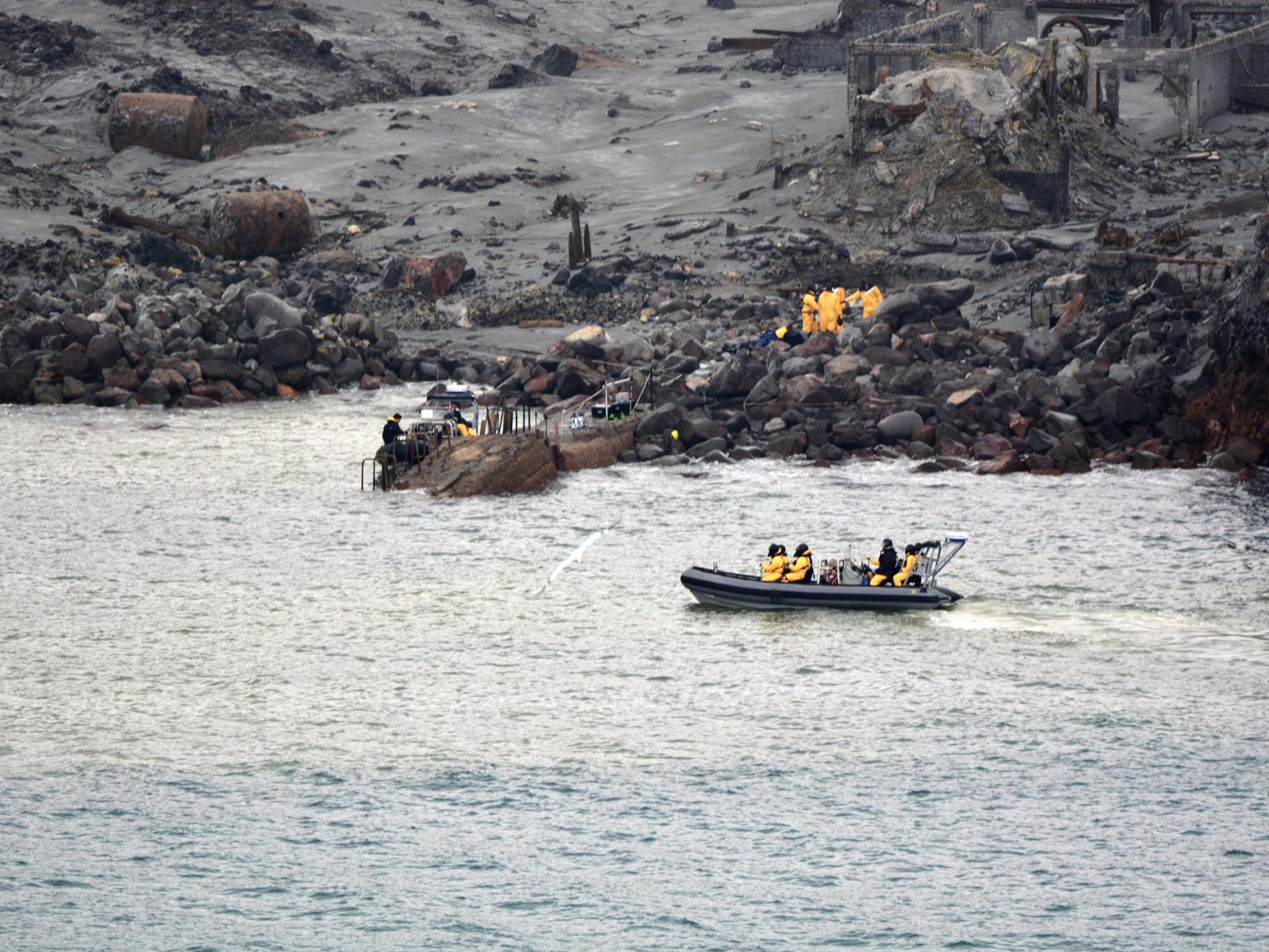New Zealand volcano: Six bodies recovered from White Island following eruption
At least 16 confirmed dead after Monday’s disaster, with dozens of survivors receiving treatment for severe burns

Six bodies have been recovered from New Zealand’s White Island following the volcanic eruption that has left at least 16 people dead.
Eight military specialists wearing protective clothing and using breathing apparatuses were flown to the island on Friday morning to begin the retrieval operation, despite the threat of further volcanic activity.
Although the rescue team successfully recovered six bodies, which had been located the night before by drones, the search will continue on Saturday for two others.
Authorities said one of those bodies was known to be in the water off the island, but was unable to be retrieved by divers. The whereabouts of the second body has yet to be established.
“The operation was not without risk but thanks to sound planning and the skills of the specialist team involved we have recovered the six bodies,” New Zealand police commissioner Mike Bush said in a statement.
“The environment the recovery team faced today was highly unpredictable and challenging. They showed absolute courage and commitment to ensure we can offer some closure to the families and friends of those who have lost loved ones.”
Police said the recovered bodies were transferred via helicopter to a navy ship, the HMNZS Wellington, and would be taken to nearby Auckland.
Initial attempts to recover those killed in Monday’s eruption were delayed by “highly volatile” volcanic activity that prevented rescue services returning to the island.
But after police confirmed conditions were stable enough to allow the retrieval operation to proceed, a traditional blessing was held at sea with family members of the victims, as two New Zealand defence force helicopters took off from the nearby coastal town Whakatane.
Police, military and other personnel monitored the recovery operation from a ship stationed just off the island, while volcanologists used electronic equipment to provide the rescue team with real-time information on the volcano’s behaviour.
Deputy commissioner Mike Clement said the ground operation was taking longer than expected due to the weight of protective equipment, which helps keep the rescuers safe from the island’s potentially fatal toxic and corrosive gases.
A total of 47 people were on White Island, which lies 30 miles off New Zealand’s eastern coast, when the eruption occurred on Monday. This number included 24 Australians, nine Americans, five New Zealanders, four Germans, two Britons – both of whom have been admitted to hospital – two Chinese and a Malaysian, authorities said.
New Zealand medical staff have been working around the clock to treat the injured survivors in hospital burns units across the country, and are set to be joined by specialist medical teams from Australia, Britain and the US.
Dr Peter Watson from Middlemore Hospital, where the country’s National Burns Unit is based, said earlier this week that authorities have ordered 1.2 million sq cm of skin from America to treat patients, with some suffering from burns that have affected 95 per cent of their bodies.
Those currently being treated were exposed to superheated gas made up of sulphur dioxide and hydrogen chloride, burning their lungs and skin in the process. Australian volcanologist Raymond Cas added that large rocks would also have been hurtled through the air by the eruption at “supersonic speeds”.

Monitoring agency GeoNet said on Thursday local time that the White Island’s volcanic alert had been lowered to level two after it was briefly raised to four on Monday.
However, another eruption still remains a possibility, the agency said, noting volcanic tremors are rising while steam and mud are being vented regularly.
White Island is the tip of a mostly underwater volcano close to New Zealand’s North Island and has been a popular attraction visited by thousands of tourists each year.
Additional reporting by PA
Join our commenting forum
Join thought-provoking conversations, follow other Independent readers and see their replies
Comments
Bookmark popover
Removed from bookmarks